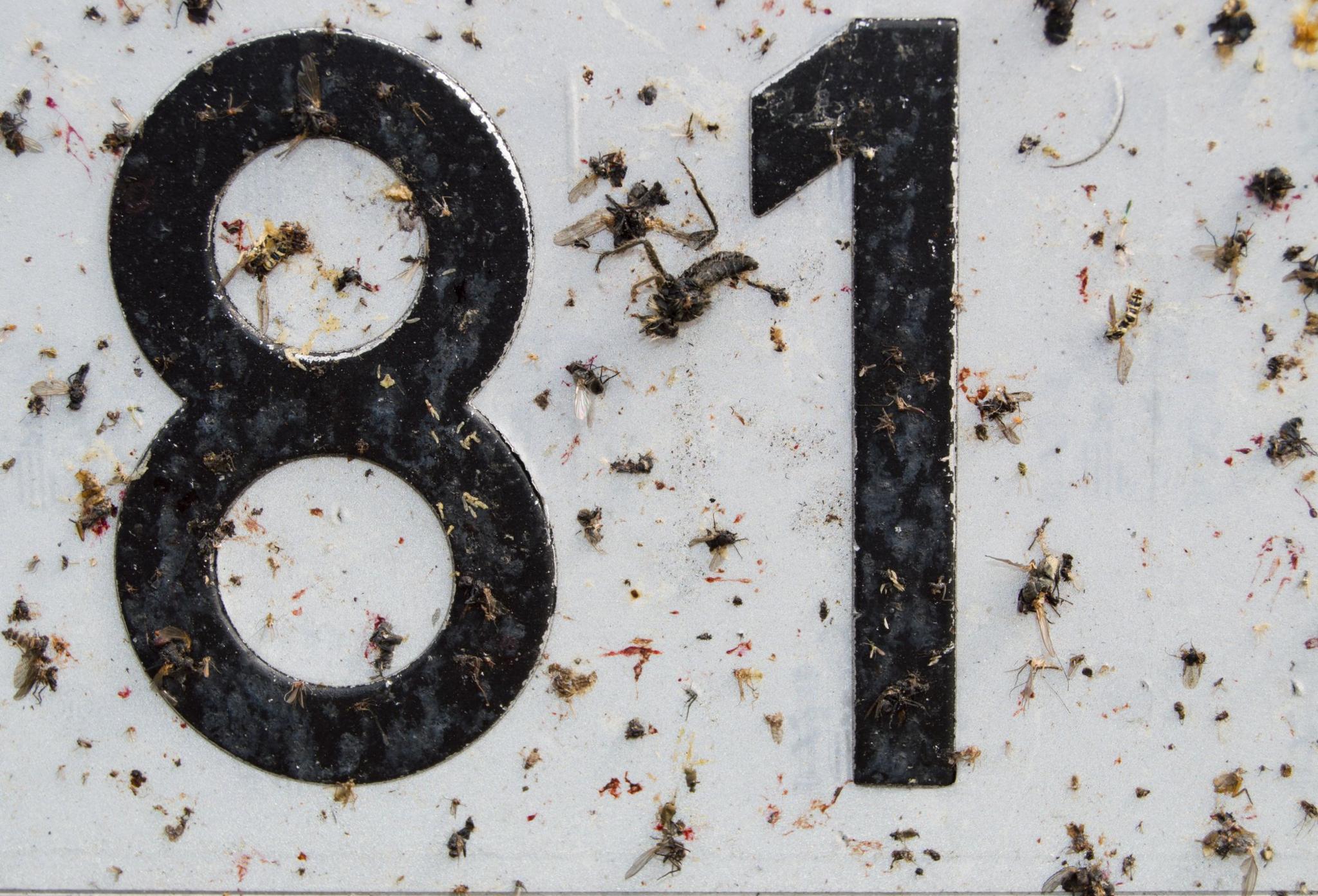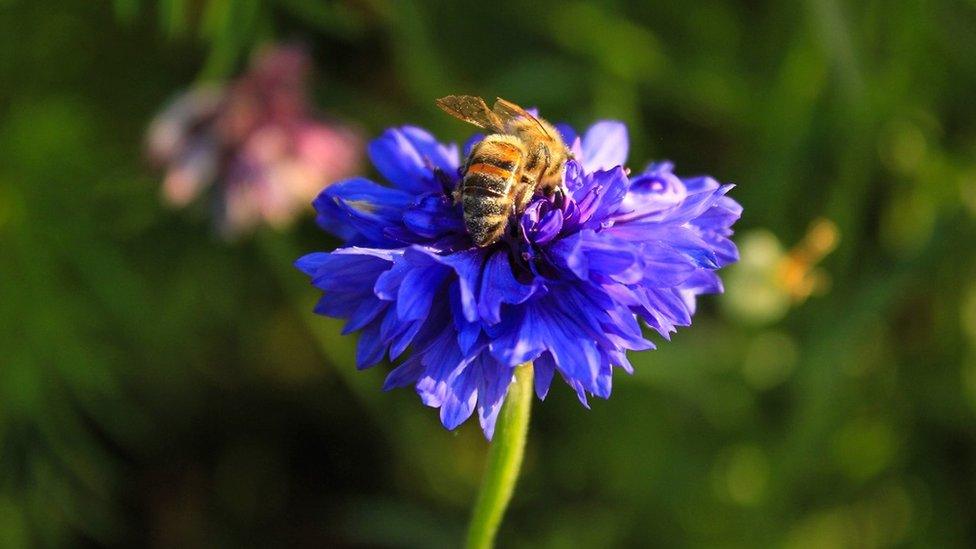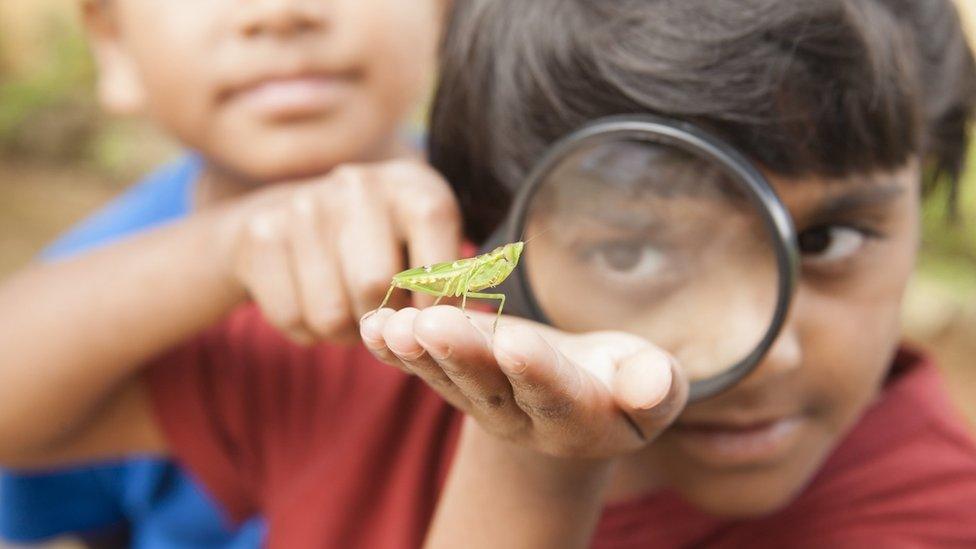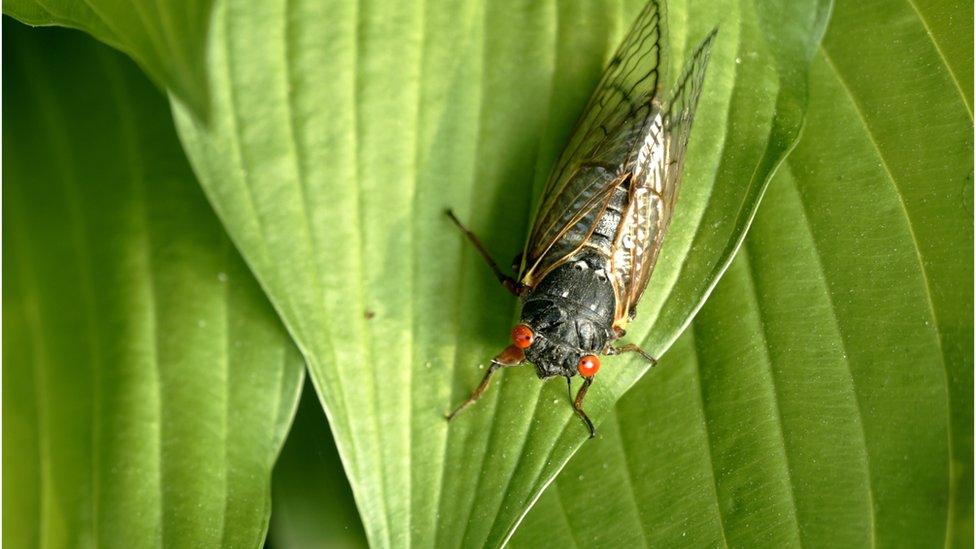Insect numbers are falling across the UK, according to new survey
- Published
- comments

Drivers were asked to count the number of bugs splattered on their number plate
Whether it's bees and wasps flying around during the year's warmer months, or moths and flies spotted near bright lights, insects are something people see all the time.
However, the results of a new survey suggest their numbers are rapidly declining, falling by almost 60% in less than 20 years.
Before the survey was carried out, stories from drivers suggested they were seeing fewer moths, flies, aphids, bees and flying beetles on their windscreens compared to in the past.
In order to figure out whether insect numbers were actually decreasing, a citizen science project was started by the charity Buglife alongside the Kent Wildlife Trust.
People were encouraged to count the number of squashed bugs on their vehicle number plates between 2019 and 2021, and this was compared with data from a survey led by the RSPB using the same method in 2004.
Before making an essential journey in their cars, drivers cleaned their number plates, and after their trips, counted the insects squashed on them using a "splatometer grid" supplied as part of the survey.
An app was launched last year where people could record their results and add photos of their number plates.
The project aims to provide more data on what's going on with insects in the UK as bugs play a really important role in the natural world. They pollinate many of the world's crops, help to keep pest numbers down and help break down organic matter returning nutrients into the soil, according to conservationists.

Lots of bugs including bees are important pollinators
Keeping track of insect numbers not only helps to determine how many of the critters are in towns and the countryside, but it can also reflect the state of wildlife more generally.
In total, the number of insects counted on vehicle number plates fell by 59% between 2004 and 2021, the survey found.
England saw the biggest decline, with the number of insects counted down by 65% compared with 17 years ago.
Wales recorded 55% fewer insects compared to figures from 2004, Scotland saw a 28% drop and too few surveys were taken in Northern Ireland to determine what's happened to insect numbers in the country, conservationists said.
The number of insects is going down. Jenny explains why this is important.
Although the survey results showed big falls in insect numbers, more data would need to be collected over a much longer period of time and the counting of insects would have to cover bigger spaces in order for stronger conclusions to be drawn. However, the conservationists say the survey has shown it's possible for this type of information to be collected.
"This vital study suggests that the number of flying insects is declining by an average of 34% per decade, this is terrifying," said Matt Shardlow who is the chief executive at Buglife.
"We cannot put off action any longer, for the health and wellbeing of future generations this demands a political and a societal response, it is essential that we halt biodiversity decline - now."

Insect numbers have an impact on the state of wildlife more generally
Paul Hadaway who is the director of conservation at Kent Wildlife Trust believes the declines in insect numbers reflected the enormous threats to and loss of wildlife more broadly across the country.
"These declines are happening at an alarming rate and without concerted action to address them we face a stark future," he warned.
"Insects and pollinators are fundamental to the health of our environment and rural economies.
"We need action for all our wildlife now by creating more and bigger areas of habitats, providing corridors through the landscape for wildlife and allowing nature space to recover."
- Published21 July 2019

- Published2 May 2021

- Published30 March 2021

